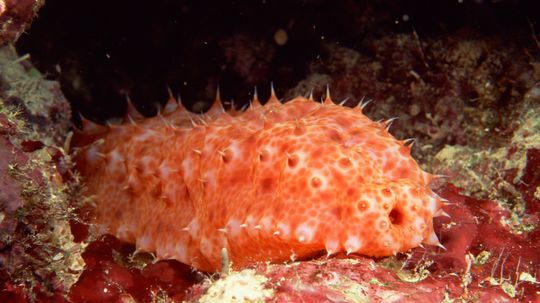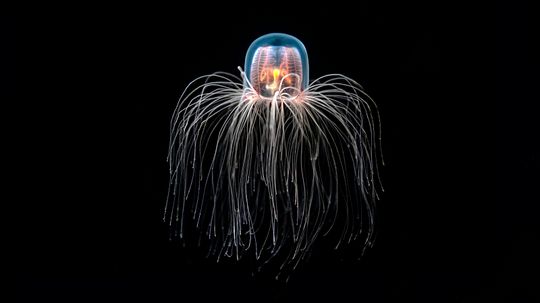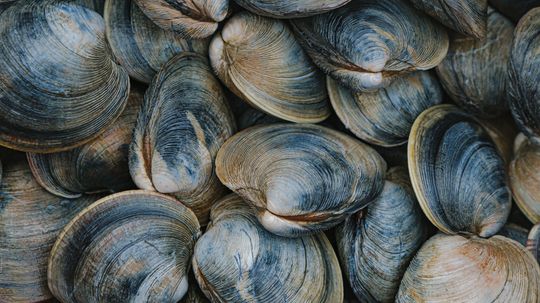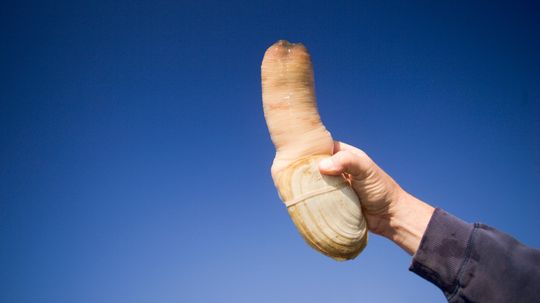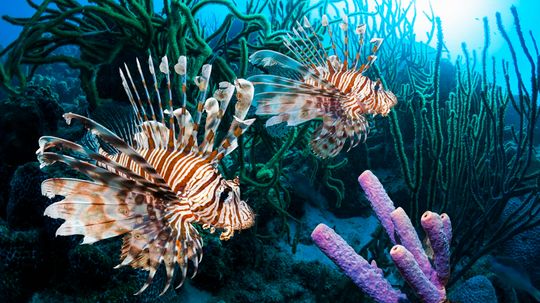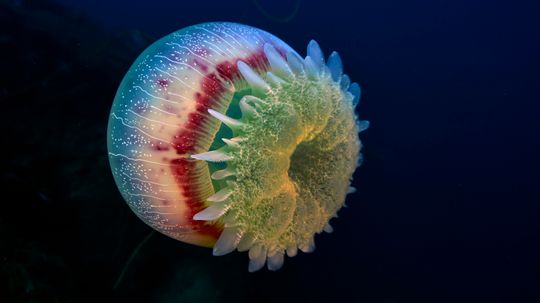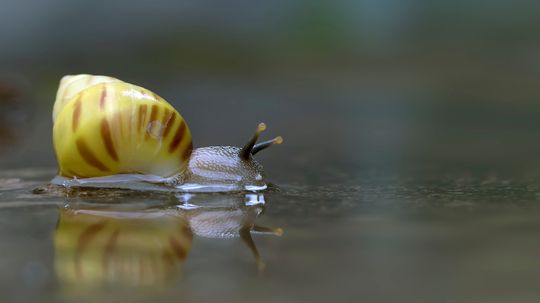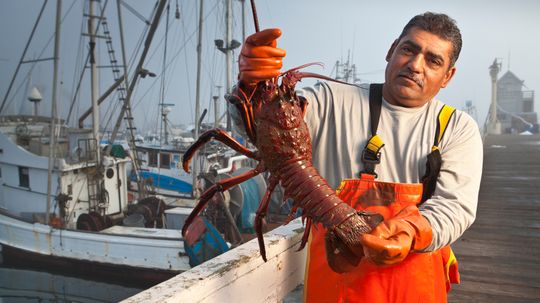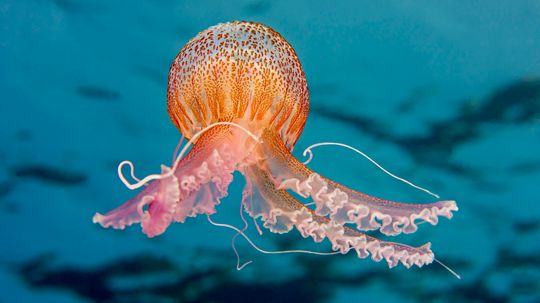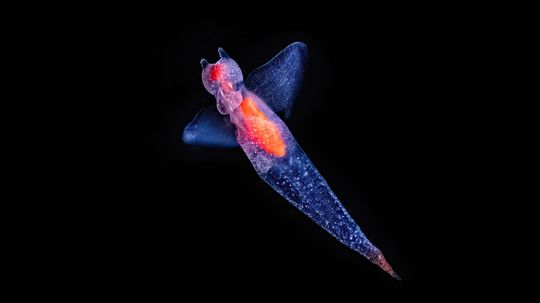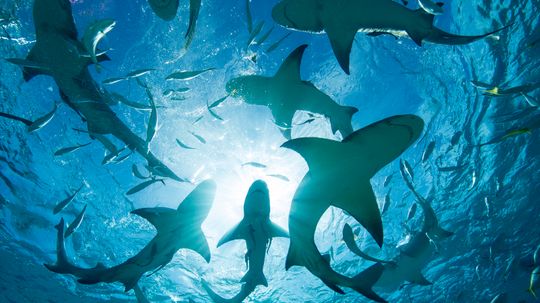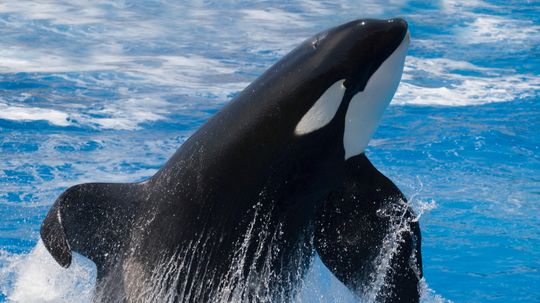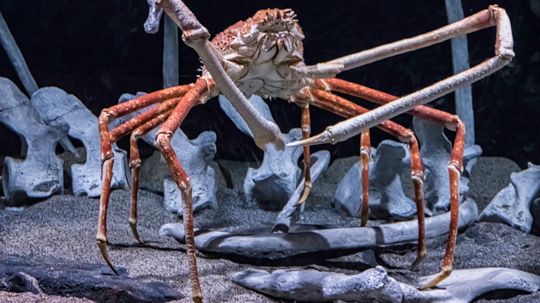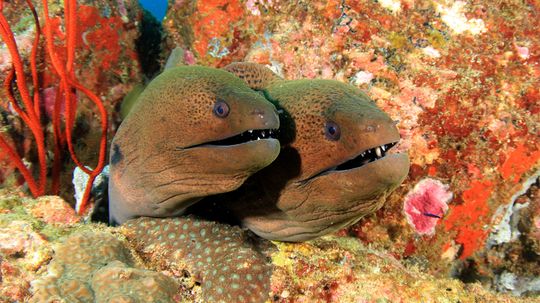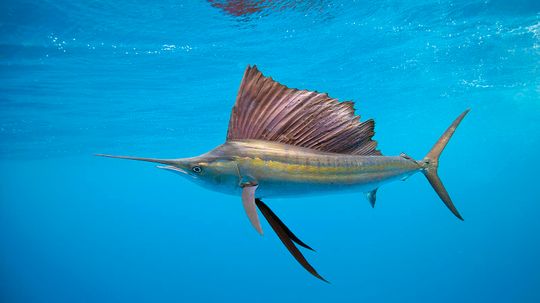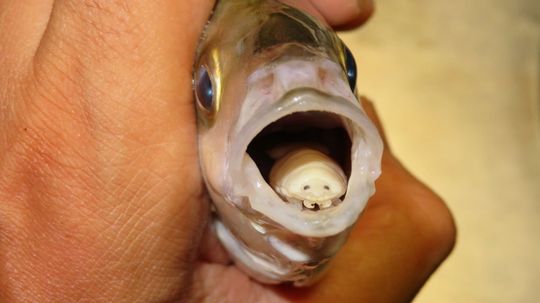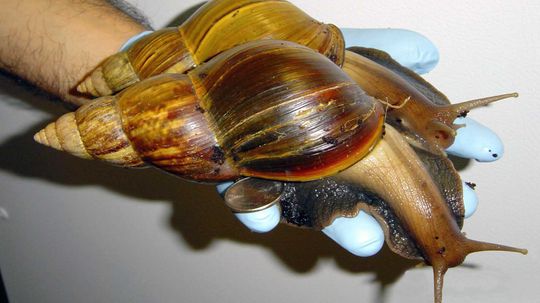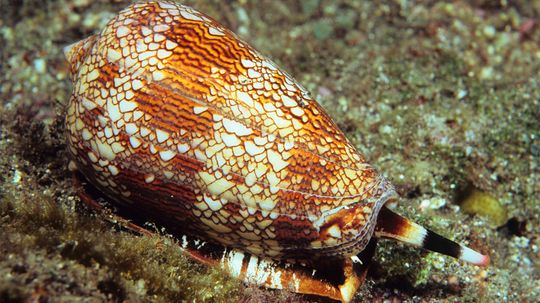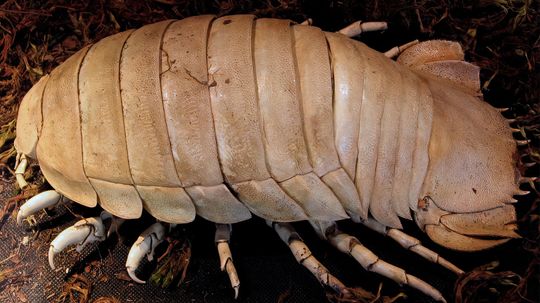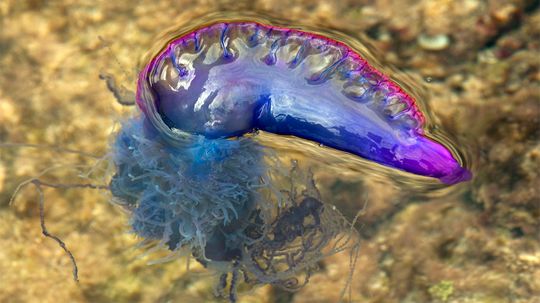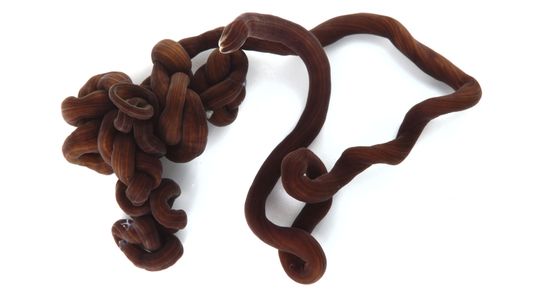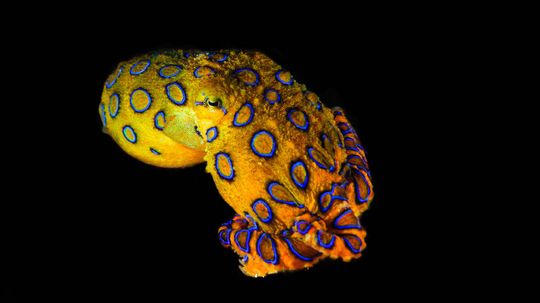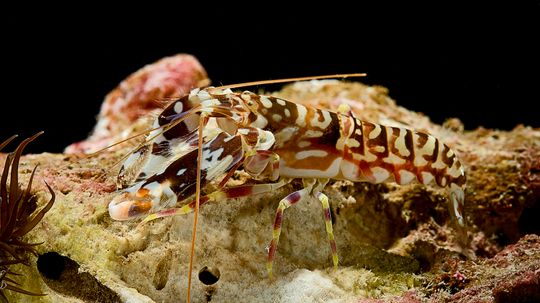Marine Life
Marine life includes an incredible and vibrant array of wild animals that live in the ocean. From tiny phytoplankton to massive blue whales, marine life is a vital source of food, energy and life for the entire planet.
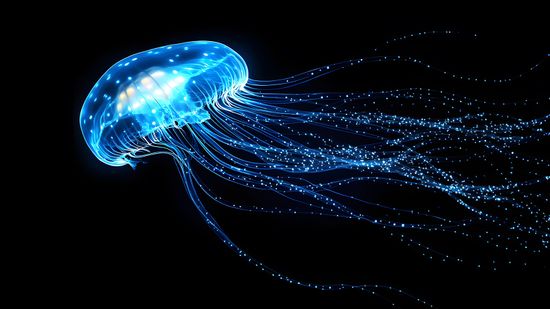
How Bioluminescent Jellyfish Get Their Signature Glow
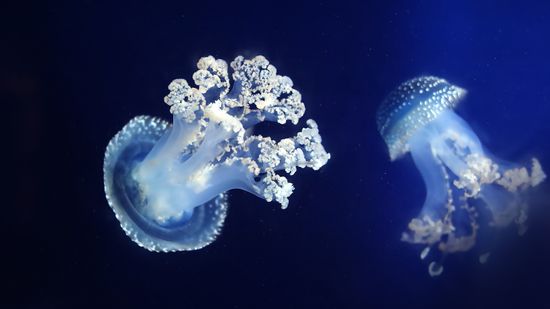
White Spotted Jellyfish: Cute Until They Become Invasive
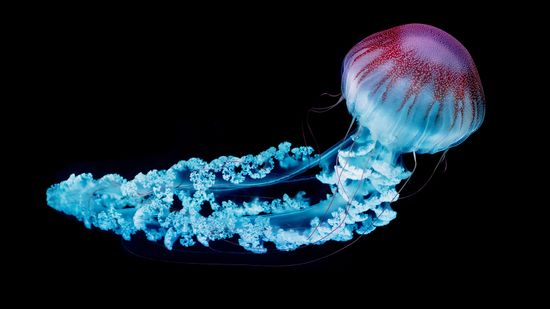
Deep Sea Jellyfish Have 30-foot-long Tentacles
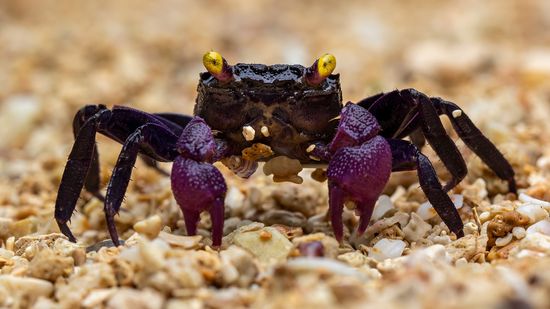
Vampire Crab: More Cartoonish Than Blood-sucking
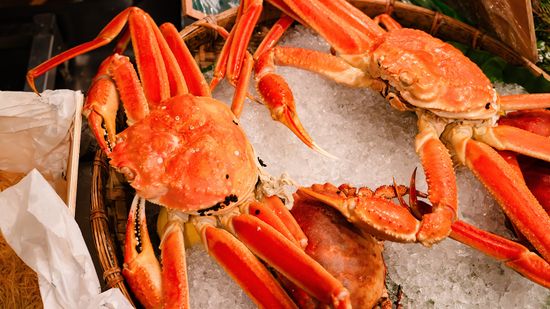
Snow Crab: A High-protein Delight Thriving in Cold Waters
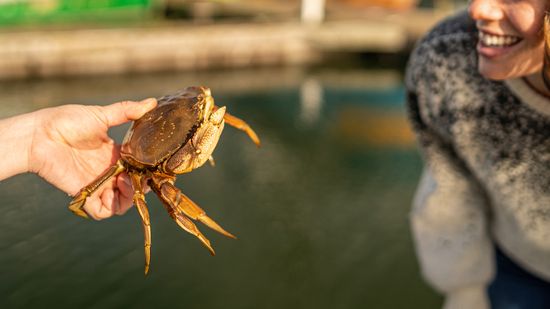
Dungeness Crab: A Deliciously Sustainable Crustacean
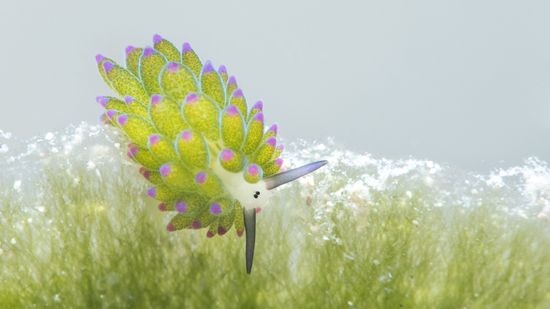
No, the Leaf Sheep Sea Slug Is Not an AI Hallucination
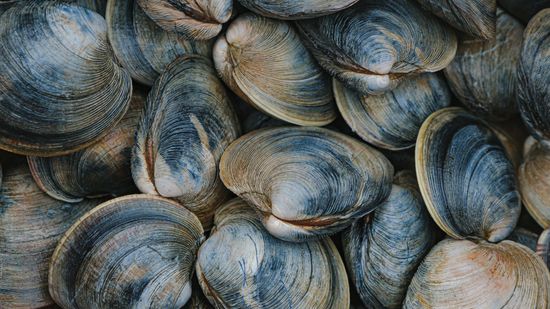
An Ocean Quahog Shows Its Age Like Rings on a Tree
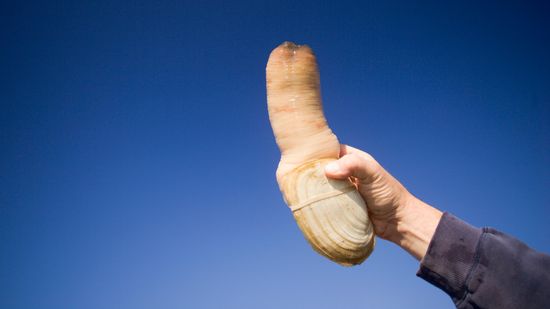
Geoduck Looks NSFW but Is Prized for Its Flavor

Colossal Squid vs. Giant Squid: There's a Massive Difference
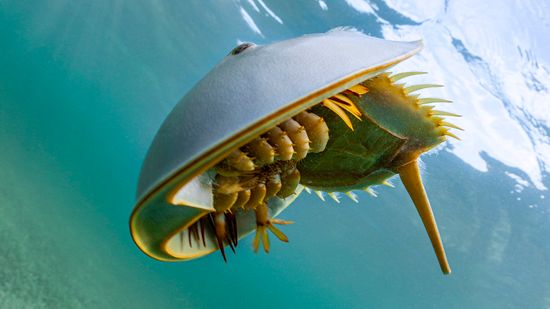
Horseshoe Crab Looks Like an Alien, If We're Being Honest
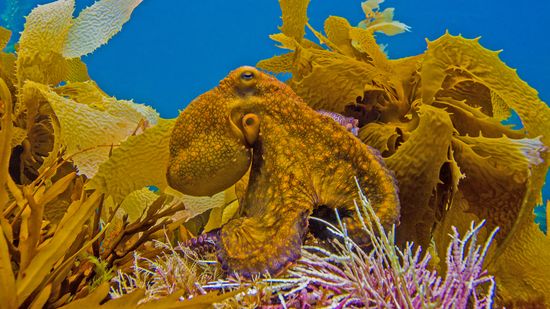
There Are 300 Types of Octopus Species, Some With Internal Shells
Learn More / Page 2
The soft, cylindrical sea cucumber looks like a vegetable — and in some countries, it's a delicacy because of its nutritional value and health benefits. But it actually belongs to the phylum of echinoderms, closely related to starfish (aka sea stars), sand dollars, sea urchins and sea lilies.
By Ada Tseng
The immortal jellyfish, known as Turritopsis dohrnii, has the ability to reverse age and theoretically live an eternal life. Because of its ability to regrow its cells, it could theoretically escape death over and over again.
By Ada Tseng
The ocean quahog (Arctica islandica) is a clam that redefines what it means to have a long lifespan. This species is famous for being one of the longest-lived animals on Earth, with individuals surviving up to 500 years! That's older than Shakespeare's first play.
By Zach Taras
Advertisement
Let's get the obvious out of the way: The geoduck (Panopea generosa) looks more than a little NSFW. But it's totally PG, we swear! Found primarily in the Pacific Northwest, this massive mollusk has captured the attention of scientists, seafood lovers and curious minds alike.
By Mack Hayden
Deep in the ocean, living in eternal darkness, is the dumbo octopus (of the genus Grimpoteuthis), a creature that few humans have seen face-to-face. When someone is lucky enough to spot one, they're often captivated by its charms.
The most dangerous sea creatures in the world don't always have large teeth like great white sharks or weigh over 10 tons (9 metric tonnes) like the killer whale. The sea creatures that are a threat to humans are often the smaller, more innocent-looking ones that carry lethal amounts of venom.
By Ada Tseng
While swarm of jellies may look serene, you're best off keeping your distance. A sting from the most dangerous jellyfish on Earth can be deadly. Even when we're not looking at the most dangerous, many jellyfish species have venomous stings that can cause everything from mild discomfort to serious pain.
By Talon Homer
Advertisement
You might think of snails as the little shelled creatures that you find crawling in your garden, or even as a delicacy of French cuisine, where they are called "escargot." But there are snails that live in the water, too, including marine snails in the tropical oceans and freshwater snails found across the world in ponds, lakes and rivers.
By Zach Taras
Both the European lobster and American lobster are crustaceans that people living in coastal regions love to eat, but left to their devices, the lobsters can survive many decades and grow to ridiculous sizes - particularly the American lobster, which is the largest arthropod species on Earth.
By Talon Homer
The life cycle of jellyfish can seem almost otherworldly. Some species are the closer to actual immortality than anything else we see in the animal kingdom!
By Mack Hayden
Far below the ocean's surface, in the dark depths of the deep sea floor ecosystem (about 3,000 feet or 1,000 meters deep), exists an entire world of deep sea creatures that humans rarely glimpse.
By Sascha Bos
Advertisement
If you're afraid of sharks, stop reading now, because we're about to get in deep with six types of sharks. Learn more about these fascinating fish - big and small, solid and patterned, sluggish and speedy.
By Sascha Bos
Orcas are known as "killer whales" because they are apex predators. In the wild, highly social killer whales prey on sharks, seals, dolphins and even other whales.
By Sascha Bos
Far below the ocean's surface, in the dark depths of the deep sea floor ecosystem (about 3,000 feet or 1,000 meters deep), exists an entire world of deep sea creatures that humans rarely glimpse.
By Sascha Bos
Known for their long legs, pincers and hard shells, most crustaceans are omnivorous scavengers, although some are predators or vegetarians. Either way, a steady diet can assist certain crab species in growing to incredible sizes.
By Marie Look
Advertisement
It's a slippery proposition, to be sure, but bees do it, birds do it and you can bet that eels do it too. The question is, how do eels reproduce?
By Mark Mancini
Sailfish are the fastest known animal in the ocean. Just how fast? As fast as a cheetah. That's how fast.
Cymothoa exigua will make you feel very glad you're not a fish.
These massive mollusks are one of the world's most invasive species. They have the potential to devastate Florida's agriculture. Oh, and they can cause meningitis in humans.
By Sarah Gleim
Advertisement
Cone snails are marine animals that harpoon their prey and incapacitate them with deadly toxins. They may be beautiful, but they are highly venomous.
Tons of these humongous bug-like creatures live in the darkest depths of the sea, but they are still somewhat of a mystery to us humans.
Even washed up on the beach, the Portuguese man-of-war can deliver searing pain with its stinging tentacles, so whatever you do, don't touch it.
By Mark Mancini
You might not think a worm could be longer than a whale, but allow us to introduce you to the bootlace worm, one of the longest animals on the planet. And, oh and it packs a potent toxin, too.
By Mark Mancini
Advertisement
Looks can be deceiving. That's definitely true for the blue-ringed octopus. It's tiny, stunningly beautiful and looks harmless. Yet its venom could kill 26 men in minutes.
The pistol shrimp is feared in the ocean for its ability to hit a prey with air bubbles that travel 82 feet per second, pop at 218 decibels and deliver 8,000 degrees Fahrenheit of heat.
By Katie Carman
